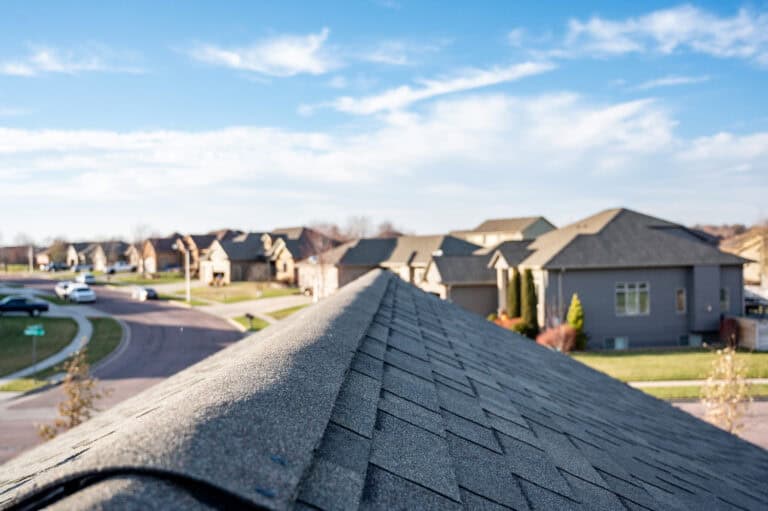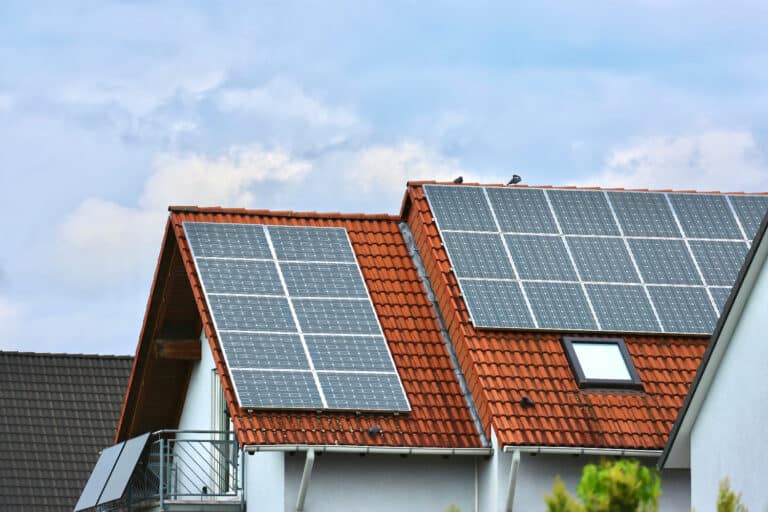For homeowners looking to handle rainfall effectively, the right gutter downspout parts are non-negotiable. Our straightforward guide explains how these components fit into your home’s defense against water damage, ensuring that you’re equipped with the knowledge for proper rainwater management.
Inside this blog:
- Essential Gutter Downspout Parts
- Materials and Styles for Gutter Downspout Parts
- Choosing the Right Size and Color for Your Gutter Project
To learn more about gutters, keep reading below.
3 Essential Gutter Downspout Parts
Navigating the intricacies of a gutter system may feel daunting, but fear not! Mastering the basics is easier than you think. We’ll first familiarize ourselves with three key components of a gutter downspout: elbows, extensions, and end caps. Each of these components ensures that water flows smoothly from your roof and away from your home, preventing potential property damage.
The size of these gutter downspout parts is vital for effective water management. The width and depth of gutters determine their capacity to handle water runoff. Equally, downspout size and placement must align with the gutter size and the roof’s water flow volume.
1. Elbows
We’ll begin with elbows. These bent sections of a gutter downspout are essential for directing water flow around corners and toward designated drainage areas. Think of them as traffic cops, guiding the water where to go and ensuring it doesn’t take a wrong turn and cause havoc at the corner.
There are two main types of elbows: A-Style and B-Style. A-Style elbows direct water forward or backward, often using a 75-degree angle. In contrast, B-Style elbows channel water left or right, commonly at a sharp 90 degrees. A 75-degree elbow is frequently chosen for residential gutters, placed at the bottom of downspouts to ensure a smooth flow and avoid blockages.
2. Extensions
Moving on, we have extensions. These are crucial for directing water away from your home’s foundation. By preventing pooling or puddling near the base of your house, extensions help to avoid potential damage caused by water infiltration.
There are different types of extensions available, including flexible, roll-out, or flip-up. Each type offers unique benefits, so you can choose the one that best suits your property’s needs and your personal preferences
3. End Caps
Finally, we come to end caps. These are attached to the ends of gutters using rivets to seal them off. This prevents water from escaping and ensures it flows efficiently through the gutter system.
End caps, also known as gutter stop ends, are typically located at the corners of a house or where gutter systems conclude. They play a critical role in directing water through downspouts rather than letting it flow out the ends of the gutters. To minimize the risk of leakage, it’s important to ensure that end caps are correctly aligned, securely fastened, and regularly checked for signs of wear or damage.
Materials and Styles for Gutter Downspout Parts
Choosing the right material for your gutter downspout parts is a key decision in any gutter project. From vinyl to aluminum to copper, each material offers distinct benefits in terms of durability and aesthetics. Your choice will depend on your budget, local climate, and personal taste.
Vinyl
Firstly, we’ll explore vinyl gutters in more detail. These gutter parts, referred to as PVC or plastic gutters, are lauded for their cost-effectiveness, sturdiness, and adaptability. They are a popular choice for homeowners who are budget-conscious but do not want to compromise on quality.
Vinyl gutters are highly resistant to rust and corrosion, which means they maintain their integrity even in moist environments. They also dampen sound, resulting in quieter rainwater flow compared to their metal counterparts. However, they may not endure extreme weather conditions, like aluminum or copper.
Aluminum
Then, we’ll examine aluminum gutters. These are known for their:
- Lightweight construction, which makes them easy to install
- Corrosion resistance, ensuring a long-lasting solution for water management
- Ability to protect homes for two decades or more
One distinct benefit of aluminum gutter parts is their range of colors. This allows them to offer aesthetic versatility and complement different home exteriors, adding to their appeal.
Copper
Finally, copper gutters present a unique combination of visual appeal and durability. They are particularly sought after for their distinctive look and the upscale, architectural appeal they bring to properties.
Copper gutters develop a unique verdigris patina over time, adding to the visual interest of homes. In addition to their appealing aesthetics, they are durable and low-maintenance, potentially lasting over a hundred years with proper installation and care.

Choosing the Right Size and Color for Your Gutter Project
Choosing the right size and color for your gutter project is more than just aesthetics; it’s about functionality, too. Making sure that the gutter downspouts align with the home’s eaves troughs and effectively manage water drainage is key.
Width
When choosing the width of your gutters, several factors need consideration. The size and pitch of your home’s roof, for instance, determine the volume of water the gutters must handle. Larger gutter widths are necessary in areas with heavy rainfall to manage the increased volume of water coming off the roof.
Calculating the correct dimensions for new gutter installations requires assessing the following factors:
- The drainage area
- The roofing pitch
- The intensity of local rainfall
Color Matching
Color plays a vital role in the aesthetic appeal of your home’s exterior. Gutters can either match or contrast with the home’s siding and trim, depending on your preference. Some popular gutter colors include:
- Tuxedo gray
- Chocolate
- Bronze
- Tan
- Red
The choice between matching or contrasting colors will depend on whether you want your gutters to blend in or stand out. Matching the gutter color to the trim minimizes visibility, while contrasting colors can make an architectural statement.
Give Your Gutters the Care They Deserve
Your gutter system plays a significant role in protecting your home from potential water damage. Understanding the different parts of a gutter downspout, their functions, and the materials they can be made from can help you maintain your gutter system effectively. Each part has a crucial role to play in efficient water drainage.
Now that you understand more about your gutters, it’s time to get them serviced. Contact Clean Cut to get gutter installation and repair.




